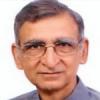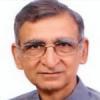Mangalore: One man’s meat is other man’s poison. Rightly so, plastic, which is one of the major pollutants already standing like an ogress in front of the civic bodies was banned in the city. However, this move has put thousands of people in trouble as for these sections plastic had been the source of livelihood.
In Mangalore the entrepreneurs had poured in lakhs of rupees as capital to start plastic production units and it is said that in Dakshina Kannada district there are about 50 plastic manufacturing units. These units employ over 5,000 people directly and 10,000 persons indirectly.
The move of the district administration of unilaterally banning carry bags, without identifying alternative has irked the plastic producers. They have a legitimate question to ask.
“While plastic is being used as packaging material, why ban has been imposed only on carry bags,” they question. Carrying the same question, they have moved to the Court too.
Complete ban impossible
The point which is boggling many is the reason why the DC has not been issuing an order on plastic ban and if the DC has issued an order then where is the copy of the order. The manufacturers say that while the ban on plastic has not been imposed anywhere else in the country, why this special rule has been brought in only in Mangalore city and Mangalore taluk.
The Apex Court verdict of 2011 states that the manufacturers must keep away from producing plastic below 40 micron thickness.
“It is impossible to bring about blanket ban on plastic. As far as we are concerned, we can plan our next move only when the DC issues an order. If he has not issued an order, our hands are tied,” says Deccan Plastic proprietor Asgar.
Leaders sidelined
It is said that Krishna Palemar as Enivronment Minister had written to the DC instructing him not to ban plastic thicker than 40 microns. MLA U T Khader, Assembly Deputy Speaker Yogish Bhat too had stood against complete ban on plastic. The manufacturers sense a strong vested interest playing behind the scene because the district administration has opted to go against the directions of the elected representatives in this case.
They feel that the entrepreneurs engaged in producing polypropylene bags are behind the ban.
“The officials are fully aware that these polypropylene bags which look like clothe are actually made from plastic. This point has been loudly told by the Karnataka State Pollution Control Board as well. Our doubt has been established by the move of the district administration, which is imposing ban only on plastic carry bags so that polypropylene bags can take over,” said Plastic Carry bag Manufacturers’ Association President Naseer Ahmed.
The manufacturers say that while Center is asking to have edible oil packed in plastic pouches only to avoid adulteration, why ban plastic only in Mangalore.
“A plastic pouch weighing 12 gms is used to pack snacks of about 15 to 20 gms by big companies. However a plastic carry bag made using 12 gms of plastic is used to carry 5 kg of essential commodities in the market. These bags can be used again and again,” says a manufacturer adding that 200 tonnes of waste is gathered in Mangalore city everyday and according to the officials plastic amounts to 12 tonnes in this. “We feel out of this 12 tonnes plastic carry bags may weigh not more than 600 kgs. When MCC is tolerating 12 tonnes of plastic, why is it making hue and cry about 600 kgs,” he adds.
What about fishes?
Former deputy commissioner Dr Channappa Gowda had banned plastic in Chikmagalur when he was the DC there. When this ban was successful in Chikmagalur, he was transferred to DK and hence he tried the same experiment in DK. However, there is lot of difference between Chikmagalur, which is covered with dense forest and Mangalore city, which is almost a metropolitan concrete jungle.
When the former DC visited the fish market to distribute alternate bags for plastic he was confronted by the fisherwomen who opposed him bitterly and demonstrated their rage by burning the alternate bags.
The manufacturers say that in a meeting convened by the DC, though assurances were made to provide alternate arrangements, the ban was imposed without doing the needful, said Canara Small Industries Association President B A Nazeer.
The manufacturers say that the district administration cannot go ahead banning carry bags without an efficient alternative in place. “Polypropylene is not an alternative for plastic,” they say.







Comments
As the admin of this web site is working, no uncertainty very rapidly it
will be renowned, due to its quality contents.
my blog ... digital piano reviews 2014: http://www.pylicun.com/comment/html//index.php?page=1&id=122626
Wonderful items from you, man. I've have in mind your stuff previous to and you're simply too
fantastic. I really like what you have received here, really like what you're saying and the way wherein you are saying it.
You are making it enjoyable and you still care for to keep it smart.
I can't wait to read far more from you. That is actually a terrific website.
Feel free to visit my blog post best roland digital piano: http://www.txct.com.cn/comment/html/index.php?page=1&id=11895
It's going to be ending of mine day, but before finish I am reading
this wonderful article to increase my experience.
Here is my webpage: best weighted digital piano: http://www.mkholidays.co.uk/index.php/component/k2/itemlist/user/679107
Good site you have here.. It's hard to find high quality writing like yours nowadays.
I seriously appreciate people like you! Take care!!
Also visit my page - weighted 88 key keyboard: http://amprom.org/?option=com_k2&view=itemlist&task=user&id=761492
Add new comment